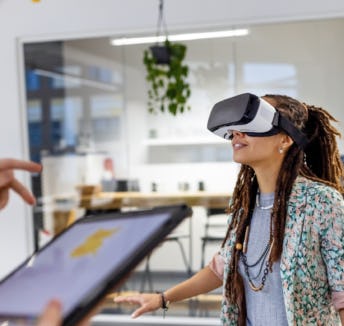
Employees are looking for more than promotions and pay rises – they want to know that a job is worth their time. The post-pandemic workforce is all about career-life balance, and they are not afraid to find it.
This summer, thousands of workers began the world’s biggest trial of the four-day working week. That’s four days for the same pay as five. No loss of earnings and no reduction in productivity. It is based on the premise that people can produce the same amount of work in less time if they feel happier and healthier and that life is more balanced.
It is this same idea that has fuelled the move towards hybrid working, and that led Nike to give all of its staff a surprise week off, asking them to “take the time to unwind, de-stress and spend time with loved ones”. It has also led to increasing number of companies offering perks such as unlimited holiday. Stockbrokers FinnCap Group told staff they must take at least four weeks a year and two or three days a quarter to avoid burnout.
“There’s not a maximum, there’s a minimum you must take. The rest is up to you,” their Chief Executive told Bloomberg. This is all part of the post-pandemic epiphany that health and happiness have a value – to individual people, to the quality of work, and ultimately, to the bottom line.
Because you’re worth it
Microsoft’s 2022 Work Trend Index coined the “worth it” equation; what people want from work and what they are willing to give in return. The study of 31,000 people in 31 countries found that 53% of employees are more likely to prioritise health and wellbeing over work than before the pandemic, and that increasing numbers of Gen Z and Millennials are likely to consider changing employers in search of better work-life balance – the holy grail of a modern career. Similarly, research by IWG found that 72% of office workers would prefer long-term flexibility over where they are based to a 10 per cent pay rise.
Hybrid working has helped us focus more on ourselves, our relationships with colleagues, and our relationship with work. But with more time apart due to remote working, we have to be proactive to keep the creative fires burning.
Collaboration and honest communication can keep staff feeling involved and helps to hold their trust (and therefore their loyalty). Time in the office also takes on a different value – conversation, team culture, and human interaction have to proliferate because it makes the commute into the office on the overcrowded train worth it. Employees want perks, but not the free beer and a fruit bowl kind. They want to be inspired by guest speakers and networking events, and the opportunity to converse with people higher up the business hierarchy.
People power
Of all the various rebranding exercises that take place, the renaming by numerous companies of ‘human resources’ feels significant. Some companies have gone for ‘Human Relations’, while others have opted for ‘The People Team’, or one better, ‘The People Experience Team’. The issue, obvious now we look at it, was the brazen labelling of people as resources.
Resources are things – “money, materials, staff” as defined by Google. And employees are done with feeling like that. Author and futurist Jacob Morgan says that this department for humans, however it is named, should be about “designing new work environments so that people want to show up. Not only to be present, but to be engaged”.
But what does this environment need to look like? If buzz and energy come from people then there have to be event spaces where we can sip Bloody Marys and listen to great stories.
If we want honest conversations with colleagues then we need areas with walls for one-to-ones, rather than being called in to sit at somebody else’s desk. They also need to be fluid, so people aren’t always sat next to their favourites, or next to the boss.
The new emphasis on health and happiness has to be one of the few silver linings of the pandemic. Companies now need to prove that they value individual humans in order to attract and retain the best employees. And the very best thing about all of this for employers is that as well as getting that warm and fuzzy feeling that comes from doing the right thing, you are also likely to get better output, because happy employees are more productive employees.
For more news and views on workspace, office life and careers check out the Magazine section of our website.
Share this article
 Read now Goodbye to the beanbags: Why the office needs to grow up
Read now Goodbye to the beanbags: Why the office needs to grow up
 Read now The Metaverse Experience: What Does it Look and Feel Like?
Read now The Metaverse Experience: What Does it Look and Feel Like?